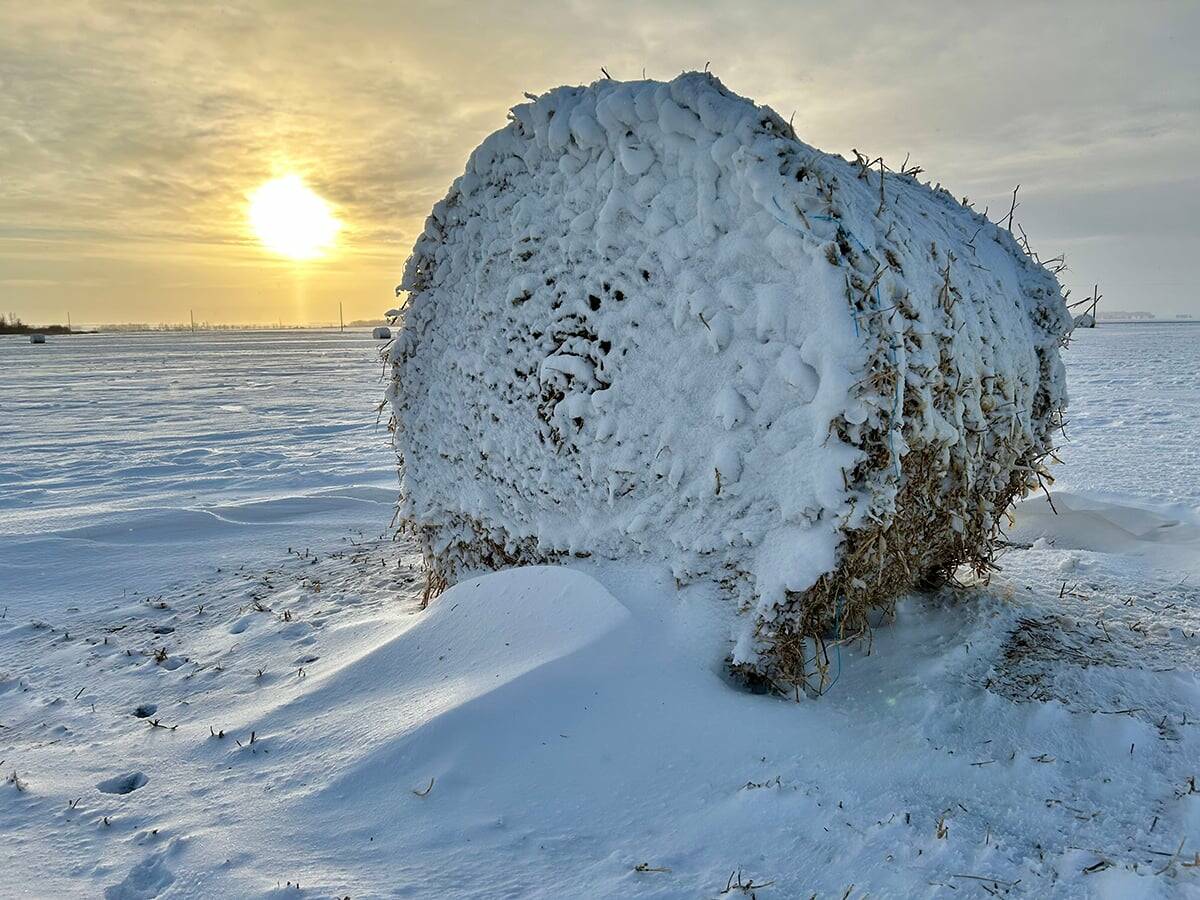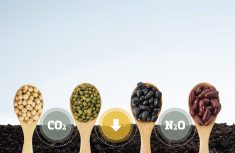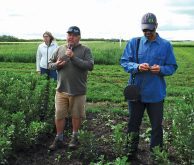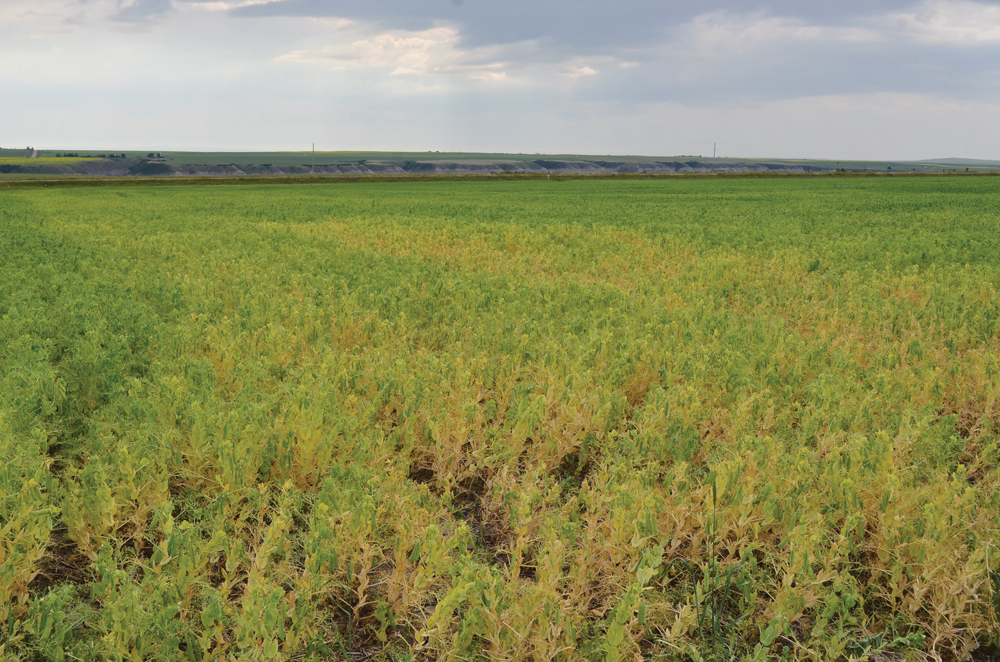There’s still lots of winter left for the coming year’s pulse ground to get moisture, says Manitoba Agriculture pulse specialist Dennis Lange.
That said, producers can be forgiven for wondering how they’ll manage their pulse crops, should 2024 turn out to be another dry year.
While Canada’s Drought Monitor expected Manitoba’s moisture situation to improve through January, the province started the year ranging from “abnormally dry” to “severe drought” in south-central Manitoba.
Read Also

What is perfect Christmas weather?
What is ‘perfect’ Christmas weather on the Prairies? Here’s where you should head this holiday, according to historical weather data.
Western Canada in general was blanketed with various severities of drought as of Dec. 31, 2023. Parts of southern Alberta held the dubious honour as the most drought-stricken region of the country.
“This area remains vulnerable to significant drought impacts, and substantial winter snowpack and spring snowmelt will be needed to fully recover,” the monitor noted in its December summary.
Why it matters: It’s too early to speculate on 2024 moisture fortunes, but thin snowpack and memories of 2023 may have producers pondering what kind of year they’re in for.
Industry in the western Prairies is already wary.
“If we don’t get any snow cover by spring, that could be a real major problem,” said Dale Risula of Saskatchewan’s Ministry of Agriculture. “Having gone through a number of dry years now, there’s very little moisture reserves in the soil.”
Soybeans
If the producer is worried about a dry year in 2024, Lange said, proper seeding strategy should be key in their plans.
Soybeans are well known for their love of warmer soil — the standard recommendation is to wait until ground reaches 10 C — but that can come up against the desire to capitalize on post-melt moisture if the rain tap is expected to stay off.
Lange reiterated that warmth threshold.
Targeted seed depth for soybean ranges from an inch to inch-and-a-half deep, he noted, but if the soil is dry, he has seen producers go down to two inches. “Going to that depth, first of all, you’ll see slower emergence … but if you have warmer temperatures, they will still kind of push through, but only go as deep as you need to.”
If the spring is cold, however, those beans will take a long time to break ground, he cautioned.
He has also seen producers err the other way, putting seeds in at under an inch if they see rain in the forecast. That’s not a strategy he suggests.
He also urged producers to split their risk, and to plant their longer-maturing varieties first.
Experts have started to advise producers against putting all their eggs in one varietal basket. At the Manitoba Agronomists’ Conference, held in mid-December 2023, speakers from Ontario argued that seeding a single variety was a mistake, and that producers should be putting down at least three for the sake of diversity.
Farming for moisture
Experts across the Prairies are giving similar advice as Lange’s: plan as normal, but focus on good moisture management.
“It’s just being a smart farmer and giving your pea crops the most advantage you possibly can right from the get-go,” said Robyne Davidson, pulse specialist with Lakeland College in Vermilion, Alta.
Sask. ag’s Risula recommends minimizing tillage to save as much moisture as possible. He also suggests using the root depth of last year’s crop as a guide to find moisture.
“Crop rotations will play a part because different crops have different rooting depths over the growing season,” he said.
“If you want to consider growing a crop (on a field) that’s had a deep-rooted plant on it, there might be more moisture in the top part of the profile than there would be if you seed in an area where there was a medium- or short-rooted plant from the previous season.”
The producer may also want to hedge their loss risk by starting off with lower-value seed. Producers looking down the barrel of a dry season will be chomping at the bit to get in the cab, he acknowledged. After all, the longer the producer waits, the more moisture evaporates. But jumping the gun with the higher-value seed also means greater financial risk if stands fail to thrive.
“It’s really important to seed to a level where you get even germination and even emergence of the crop throughout the field so that you have a stand to survive,” Risula said.
Watch for weeds
Weeds are another thing to watch, Lange said. Every growing weed is using up moisture that could otherwise help grow a crop, and producers should plant with an eye to stand population.
The benefit, he added, is that drought makes it harder for weeds to grow too.
“Looking at pre-emergent herbicides, sometimes they can be a bit of a challenge if it’s drier conditions in spring,” he noted.
But given the issues Manitoba has seen with waterhemp — which bites hard at yield but is almost impossible to identify from other pigweeds while young — a pre-emergence spray is still a key tool in the toolbox, he said.
“The concern that comes around is, well, if we don’t get any rain, the product isn’t going to work,” Lange said. “Well, eventually you’ll get some rain and eventually the product will work. If it stays dry that long, there will be other concerns.”
Peas
Risula noted even more risk when it comes to chasing seeding-season moisture in peas.
Chasing moisture “is not necessary from April to mid-May,” he said. “There is still time to wait for a rain In April and through to mid-May to provide the moisture needed for germination and emergence. There is nothing to be gained from seeding deep in this situation.”
Deep seeding also means the risk of planting into cooler soil, he added.
“Cool conditions, combined with the extended distance seedlings must grow to reach the soil surface, will mean higher seed and seedling mortality,” he warned. “Higher seeding rates will be needed to compensate.”
Risula advises keeping seeding rates in the crop’s recommended range during normal heavier rainfall periods.
Alberta Pulse Growers recommends seeding field peas at 75 to 90 plants per square metre. In Manitoba, Manitoba Pulse and Soybean Growers puts that target at 80 to 90 plants per square metre and suggests that the typical seedling survival rate is around 85 per cent.
“Cutting back the seeding rate during a dry planting season could reduce yield if normal to near-normal precipitation occurs during the growing season,” said Risula.
However, there are cases in which cutting these rates may be appropriate.
“In non-irrigated dryland areas, particularly on light-textured soils that are prone to late summer drought, seeding rates may need to be reduced to help provide each plant with as much soil moisture as possible,” he said.
Complications
Producers should also beware of unexpected problems stemming from consecutive dry years, such as herbicide residue, the Saskatchewan expert said.
Depending on what chemical went on where, he said, the producer might actually have to plant peas on peas, generally considered a crop rotation no-no.
All of that, however, requires producers to have extensive knowledge of their fields, he said.
“There’s a lot of potential risks that come up because of dry conditions, so farmers are going to have to be really conscious of (fields’) past history: chemicals applied, products applied, crops grown and type of soil compaction.”
There are tools available to help producers assess their herbicide residue risk. In Saskatchewan last year, the provincial government released a herbicide carryover risk level map for June 14 to September 26, 2022. Producers may want to watch for an updated map this year, noted Risula.
















